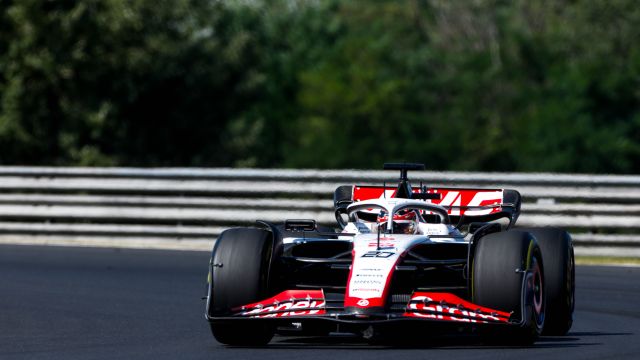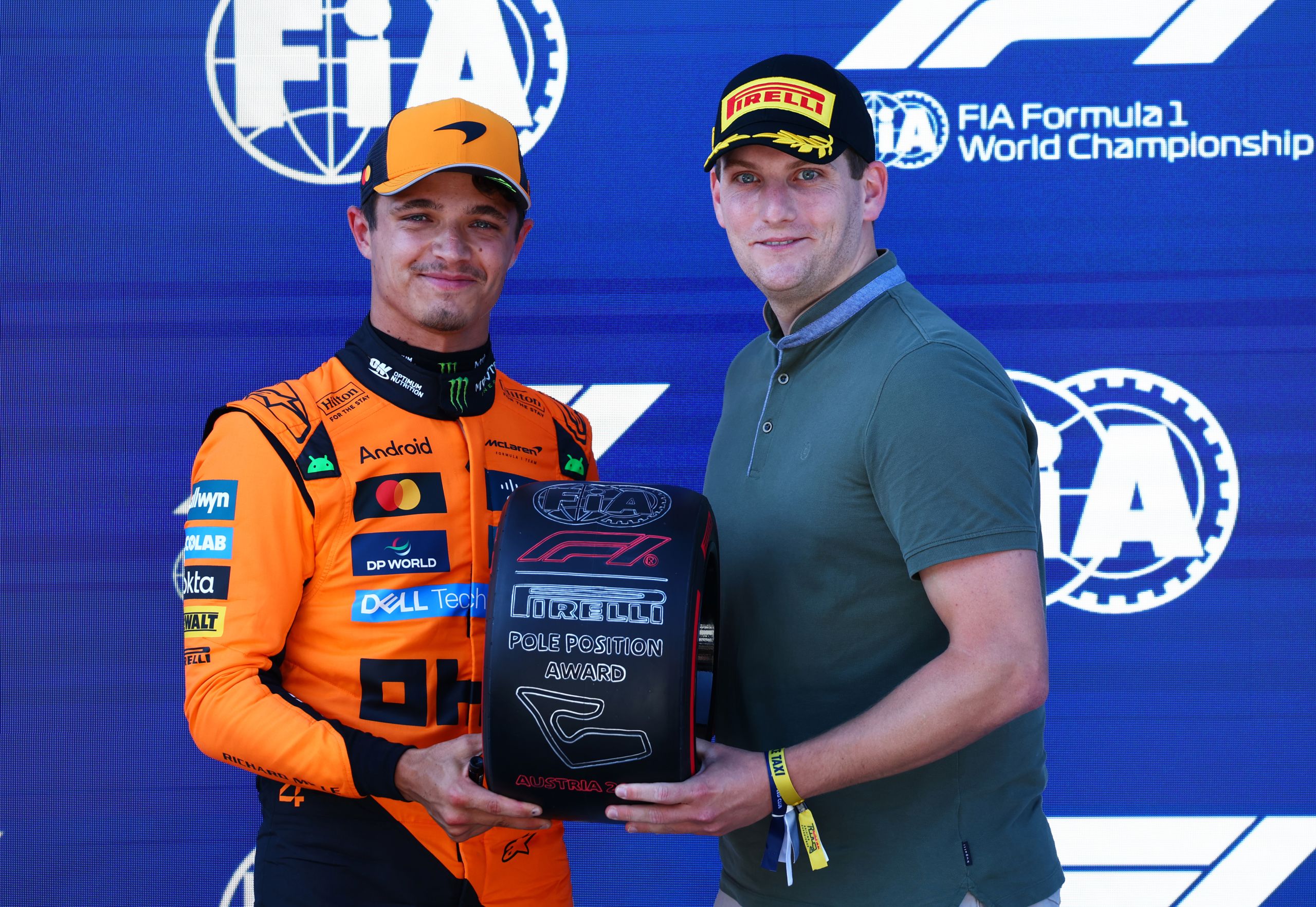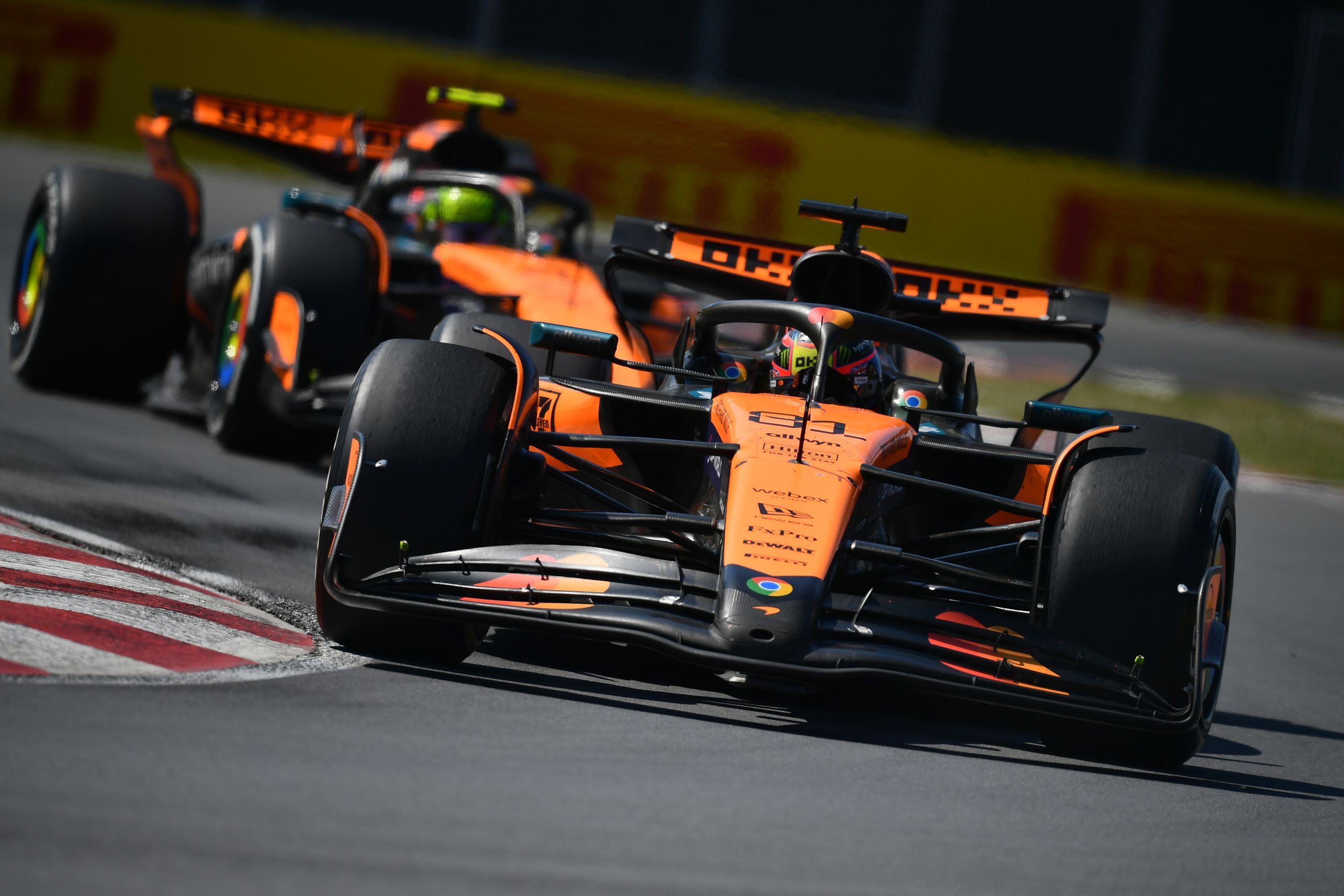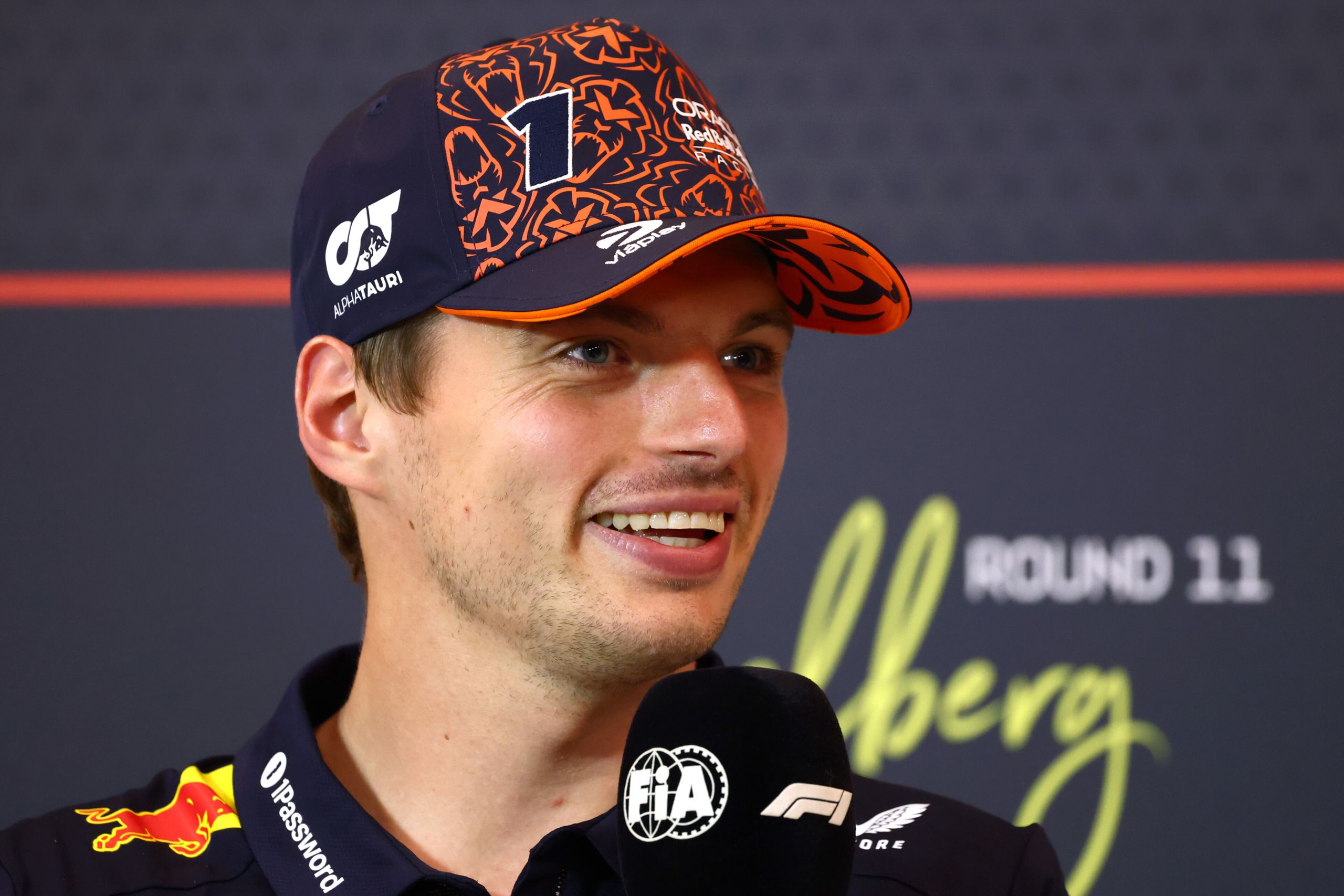Understeer vs Oversteer In F1: Decoding Cornering Techniques


Understeer vs Oversteer In F1: In the high-speed world of Formula One racing, two crucial aspects of car handling often emerge as key topics of discussion: understeer and oversteer. Understanding the difference between these two phenomena is critical for drivers, engineers, and fans alike, as it greatly impacts a car’s performance and stability during races. These terms refer to the behavior of a car when it loses grip on the track, with oversteer relating to the rear end losing grip and understeer referring to a loss of grip at the front end.
In simple terms, understeer and oversteer refer to the handling characteristics of a vehicle when it does not precisely follow the path set by the steering input. Understeer is when a car turns less than commanded, while oversteer is when it turns more than intended.
Both understeer and oversteer can affect a driver’s lap time, as well as their ability to navigate corners and handle challenging track conditions. Factors such as car setup, tire performance, and aerodynamics all play a role in determining whether a car exhibits a tendency towards understeer or oversteer. Driver preferences and driving styles also contribute to what kind of setup they choose, with some drivers favoring understeer, while others may prefer oversteer.
The role of F1 engineers and mechanics is crucial in managing and adjusting the balance between understeer and oversteer for each individual driver and track. By understanding these concepts and their implications, the motorsports community can continue to push the limits of performance and safety in Formula One racing.
Key Takeaways
- Understeer and oversteer are critical aspects of car handling, affecting lap times and car stability during races.
- Factors such as car setup, tire performance, and aerodynamics contribute to a car’s tendency towards understeer or oversteer.
- Engineers and mechanics play a crucial role in managing and adjusting the balance between understeer and oversteer for optimal performance and safety.
Understanding Oversteer and Understeer
In Formula 1, understanding the concepts of oversteer and understeer is crucial for both drivers and engineers. These two terms describe how a car deviates from the driver’s intended steering angle while turning due to a loss of traction. While both have the same end result, they occur for different reasons and have distinct characteristics.
Characteristics of Oversteer
Oversteer is a phenomenon that occurs when the rear tires lose traction during a turn, causing the back end of the car to slide outwards. This can be a result of the driver applying more power than the tires can handle, braking too hard while turning, or suddenly removing their foot from the throttle. In F1, oversteer can be dangerous and challenging to manage, as it can lead to spins, accidents, and slower lap times if not corrected promptly. Some factors that affect oversteer include:
- Car setup: Adjustments to suspension, chassis balance, or aerodynamics can influence the level of oversteer.
- Tire wear: Worn rear tires can reduce grip, causing oversteer to be more pronounced.
- Track conditions: Slippery surfaces or varying track temperatures can induce oversteer.
Characteristics of Understeer
On the other hand, understeer is the result of the front tires losing traction during a turn, causing the car to continue moving straight or not to turn as much as the driver intends. It is often considered easier for a driver to manage, as it typically results in a slower, conservative racing line. Some factors that contribute to understeer are:
- Front-wheel drive: Cars with front-wheel drive are more prone to understeer due to the weight and power distribution.
- Car setup: Adjustments to suspension, chassis balance, or aerodynamics can also affect the level of understeer.
- Tire wear: Worn front tires can reduce grip, causing understeer to be more pronounced.
- Track conditions: As with oversteer, slippery or varying track conditions can cause understeer.
In conclusion, both oversteer and understeer are critical aspects of vehicle dynamics in Formula 1. Drivers and engineers must have a deep understanding of these characteristics and their causes to optimize car setup and maximize performance on the track.
Factors Influencing Oversteer and Understeer
Weight Balance
Weight balance plays a significant role in influencing oversteer and understeer in F1 cars. The distribution of weight affects the normal force on each tire, impacting its grip. A car with a front-heavy weight distribution tends to understeer, as there is more traction on the front wheels. Conversely, a rear-heavy weight distribution can lead to oversteer, with the rear wheels providing more grip.
Throttle and Braking
Throttle and braking inputs can also impact oversteer and understeer. In rear-wheel-drive F1 cars, applying the throttle shifts weight to the rear wheels, increasing rear grip and potentially inducing oversteer. Conversely, braking transfers weight to the front wheels, causing a reduction in rear grip, which can help mitigate oversteer.
In front-wheel-drive cars, aggressive throttle application can lead to understeer as the front wheels struggle to provide both steering input and traction, while easing off the throttle can help alleviate understeer.
Car Setup
The setup of an F1 car can also have a substantial effect on its handling characteristics, including oversteer and understeer. Factors such as suspension tuning, tire pressures, and alignment settings can influence each car’s behavior. For example, increasing the front suspension’s stiffness or lowering the front tire pressure can result in more understeer, while adjusting the rear alignment to have more toe-out can produce oversteer. Understanding the interplay between these various setup choices is crucial for optimizing the car’s performance and handling.
Driving Style
A driver’s style can also contribute to the occurrence of oversteer or understeer. Being aware of weight transfer dynamics and managing throttle, braking, and steering inputs is essential for maintaining control of the car. A driver who favors aggressive corner entries may be prone to understeer, while one who prefers late braking might experience oversteer.
In summary, the factors influencing oversteer and understeer in F1 cars include weight balance, throttle and braking inputs, car setup, and driving style. A thorough understanding of these factors allows drivers and engineers to optimize the car’s handling and performance on the track.
Managing Oversteer and Understeer in F1
Formula 1 drivers are constantly battling with their cars to achieve the perfect balance during races. Two significant aspects of car control that they need to manage are oversteer and understeer. In this section, we will explore techniques that F1 drivers use to control oversteer and understeer.
Techniques for Oversteer Control
Oversteer occurs when a car’s rear slips out during cornering, causing the car to spin too much. Drivers must carefully manage this to avoid losing control and potentially crashing. Some techniques for controlling oversteer include:
- Throttle modulation: Drivers can control oversteer by adjusting their throttle input during cornering. By gradually applying the accelerator, they can regain grip on the rear tires and avoid sliding.
- Countersteering: When a driver senses that their car is about to oversteer, they can turn the steering wheel in the direction of the skid. This helps stabilize the car by transferring weight to the front tires and increasing their grip on the track.
- Braking: Briefly applying the brakes can help transfer weight to the front tires and provide more grip. This can be especially useful in high-speed corners where oversteer is more likely.
Many F1 drivers, like Fernando Alonso, prefer understeery cars over oversteery ones for better stability. However, they must adapt to the car’s behavior to stay competitive.
Techniques for Understeer Control
Understeer is when the front end of the car loses grip, causing the car to go straight instead of turning. This can also be a challenge for F1 drivers and requires specific techniques to control and minimize its effects:
- Lifting off the throttle: One way to control understeer is for the driver to lift off the accelerator. This helps transfer weight to the front tires, giving them more grip and allowing the car to turn.
- Applying trail braking: F1 drivers can use trail braking to control understeer by gently applying the brakes as they enter a corner. This technique allows the front tires to grip the track more effectively and helps maintain stability during cornering.
- Adjusting the driving line: Sometimes, changing the approach to a corner can help manage understeer. By entering a corner from a wider line and taking a sharper angle, drivers can maintain grip and avoid understeer.
By using these techniques, F1 drivers can manage oversteer and understeer effectively, thus optimizing their car’s stability and improving their overall performance.
Effects on Lap Times
Importance of Balance
In Formula One, achieving an optimal balance between understeer and oversteer is crucial to improving lap times. When a car has too much understeer, it may struggle to turn into corners, causing the driver to lose momentum and reducing the potential speed. On the other hand, excessive oversteer can lead to the rear of the car losing grip, resulting in unstable cornering and a risk of spinning out. Hence, finding the right balance between these two forces is vital for maximizing speed and performance on the track.
Formula One teams operate within a narrow window of balance for their cars, making minute adjustments based on driver preference, track conditions, and tire performance. Various factors, such as suspension stiffness, roll-bars, aerodynamics, and weight distribution, contribute to the overall car balance.
Grip
Grip, or the available traction between the tires and the track surface, plays a significant role in achieving optimal lap times. There are two main ways grip affects lap times in Formula One: mechanical grip and aerodynamic grip.
- Mechanical grip refers to the contact between the tire rubber and the track surface. In understeer situations, the front tires lose grip, while during oversteer, the rear tires lose grip. Increasing mechanical grip can help mitigate the effects of understeer and oversteer, allowing for faster cornering speeds and improved lap times. Teams focus on tire compounds, tire pressures, and suspension settings to maximize mechanical grip.
- Aerodynamic grip is created by the downforce generated by the car’s wings and other aerodynamic elements, which push the car down onto the track, increasing grip. This downforce works in tandem with mechanical grip to allow for higher cornering speeds. Teams carefully tune their car’s aerodynamics to balance the benefits of increased grip with the drawbacks of additional drag, which can slow the car on straights.
In summary, optimizing the balance between understeer and oversteer directly affects lap times in Formula One. Teams and drivers must find a balance that suits their driving style and maximizes speed and performance in different track conditions. By focusing on improving grip through mechanical and aerodynamic means, F1 teams work tirelessly to shave off precious milliseconds from their lap times.
Driver Preferences and Driving Styles
Faster and Slower Styles
In Formula 1, drivers often have varying preferences when it comes to their car setup, with some leaning towards understeer and others favoring oversteer. Understeer is a condition where the front tires lose grip, causing the car to turn less than desired. Oversteer, on the other hand, occurs when the rear tires lose grip, leading to the car turning more than intended. These setups can be influenced by factors such as ride height and ballast distribution.
Faster driving styles typically involve a preference for oversteer, sometimes described as a “loose” or “push” setup. This enables the car to rotate more quickly around corners, as the driver can control the back end to prevent excessive drifting. Maintaining a balance between grip and response allows the driver to extract every ounce of performance from their car. However, this style can be more challenging to master due to the increased risk of spinning off the track.
In contrast, slower driving styles usually prefer understeer, which offers a more predictable handling pattern and greater stability. While inherently slower, this approach appeals to drivers who value consistency over outright pace, allowing them to gradually build up speed without compromising safety.
Influential Drivers
Throughout Formula 1 history, many influential drivers have showcased their unique driving styles, demonstrating preferences for either understeer or oversteer.
- Fernando Alonso: Alonso is known for his ability to handle understeery cars effectively. By braking heavily into turns, he uses the understeer’s predictability to his advantage, allowing the car to rotate around corners.
- Kevin Magnussen: Magnussen often starts corners early and deliberately generates understeer during the “sailing” mid-corner phase. This technique allows him to manage his entry speed and maintain a higher pace through corners.
- Sebastian Vettel: Vettel was renowned for his mastery of car rotation, showcasing a preference for a balanced setup that leans towards oversteer. This allowed him to push the car to its limits without losing control.
Ultimately, driving styles in Formula 1 are influenced by a multitude of factors, including driver preferences and car design. Whether opting for understeer or oversteer, each driver must find their own unique balance to extract the maximum performance from their car while minimizing risk.
The Role of Engineers and Mechanics
Optimizing Car Setup and Performance
In Formula 1, the role of engineers and mechanics is crucial in addressing issues like understeer and oversteer. They work tirelessly to ensure that the car’s setup is optimized for maximum performance and handling on the track.
One of the primary responsibilities of engineers and mechanics is to identify the causes of understeer and oversteer and finding the right adjustments to the car’s setup to overcome these problems. This often includes adjusting parameters such as:
- Suspension: Stiffening or softening the suspension to improve the car’s grip on the track and its ability to handle corners efficiently.
- Tire pressure: Ensuring that the tires have the correct pressure for optimal grip and to minimize tire wear.
- Wing angles: Adjusting the angles of the front and rear wings to create an optimal balance between downforce and drag.
- Weight distribution: Shifting weight within the car to achieve the desired handling characteristics.
In addition to these adjustments, engineers and mechanics rely on data analysis and driver feedback to fine-tune the car’s setup in response to changing track conditions and racing situations. CarThrottle, an advanced telemetry system, is often utilized by teams to monitor and analyze various aspects of the car’s performance, including:
- Speed: The car’s speed at different points on the track, allowing engineers to identify areas where improvements can be made.
- Grip levels: The car’s grip on the track, which can be affected by factors such as tire wear and track temperature.
- Braking efficiency: The effectiveness of the braking system, helping engineers pinpoint potential issues and make necessary adjustments.
By analyzing this data and working closely with the driver, engineers and mechanics are able to make the necessary adjustments to the car’s setup to optimize performance and minimize issues related to understeer and oversteer. This ongoing process of fine-tuning the car’s handling and setup plays a vital role in achieving success in the highly competitive world of Formula 1 racing.
Oversteer and Understeer in the Motorsports Community
Experiences of Drivers and Fans
In motorsports, such as Formula 1, drivers and fans often discuss the handling characteristics of cars, with terms like oversteer and understeer frequently being brought up. These concepts are essential for understanding vehicle dynamics and can have a major impact on a driver’s performance.
Oversteer occurs when a car turns more sharply than intended, increasing the risk of a spin. This can cause the rear end of the vehicle to skid and slide out during cornering. Drivers often feel this as a sensation of losing grip at the rear tires. On the other hand, understeer is when a car doesn’t turn as sharply as the driver wants, typically causing the front tires to lose grip and the vehicle to drift wide of the intended line through a corner.
Both understeer and oversteer are generally undesirable traits for race car drivers, as they can reduce their ability to maintain control during cornering, impacting their racing lines and overall lap times. Formula 1 fans, who closely follow the drivers’ performance, are well aware of these concepts and, in turn, how they impact each driver’s racing strategy and decision-making.
Common Misconceptions
There are some common misconceptions within the motorsports community regarding understeer and oversteer:
- Cause: Many people believe that oversteer is exclusive to rear-wheel-drive cars and understeer to front-wheel-drive cars. In reality, either phenomenon can occur in any drivetrain configuration, depending on factors such as vehicle setup, weight distribution, and tire grip.
- Correction: Some fans might assume that oversteer and understeer can always be corrected by the driver solely through steering input. While skilled drivers can often counteract these behaviors, depending on the extent of the issue, sometimes adjustments to the car’s setup or driving style are required.
Understanding the differences between oversteer and understeer is essential for the motorsports community, not only to gain a deeper appreciation for the skill and strategy involved in racing, but also to debunk misconceptions and foster a clearer understanding of vehicle dynamics. In doing so, both drivers and fans can engage in more informed discussions about these critical aspects of racing performance.
Understeer vs Oversteer In F1 – Frequently Asked Questions
What factors contribute to understeer and oversteer in F1?
There are several factors that contribute to understeer and oversteer in Formula 1. These include car setup, aerodynamics, tire grip, suspension geometry, and driver inputs. The balance between front and rear grip levels determines whether a car will exhibit oversteer or understeer during cornering.
How do F1 drivers manage understeer and oversteer during races?
F1 drivers manage understeer and oversteer by adapting their driving styles and making adjustments to their car setup. To combat understeer, drivers may apply less throttle, increase the amount of trail braking, or adjust the car’s aerodynamics to increase front-end grip. Conversely, drivers may reduce oversteer by applying less steering input, modulating throttle usage, or adjusting the car’s aerodynamics to increase rear-end grip.
How do different F1 car setups affect understeer and oversteer?
Car setups play a crucial role in determining the balance between understeer and oversteer. Drivers and their teams adjust elements like suspension settings, downforce levels, brake bias, tire pressures, and more to fine-tune the car’s handling characteristics. Some drivers prefer a setup with more oversteer for a responsive and agile car, while others may prefer a setup with more understeer for a stable and predictably handling car.
How does tire wear impact understeer and oversteer in F1?
Tire wear directly impacts understeer and oversteer in F1. As tires degrade during a race, their grip levels decrease, which can cause handling imbalances. For example, if the rear tires wear out faster than the front tires, it can result in increased oversteer. Conversely, if the front tires wear out faster, the car may exhibit increased understeer. Drivers and teams must manage tire wear by adjusting driving styles, pit strategies, and car setup changes throughout the race.
Do certain tracks favor understeer or oversteer in F1?
Certain tracks in Formula 1 may favor either understeer or oversteer due to their unique characteristics. For instance, high-speed tracks with fast sweeping corners may require a car setup with more understeer for stable handling, while slow and twisty tracks may benefit from a setup with more oversteer for agility in tight corners. Additionally, factors like track surface and ambient temperatures can also influence handling balance and car setup preferences.
How have F1 regulations influenced understeer and oversteer over the years?
F1 regulations have significantly impacted understeer and oversteer throughout the sport’s history. Rule changes affecting aerodynamics, tire specifications, suspension designs, and power unit characteristics have continually altered the balance between understeer and oversteer in F1 cars. Teams and drivers continuously adapt their car setups and driving techniques to optimize the balance under the ever-evolving regulations.





